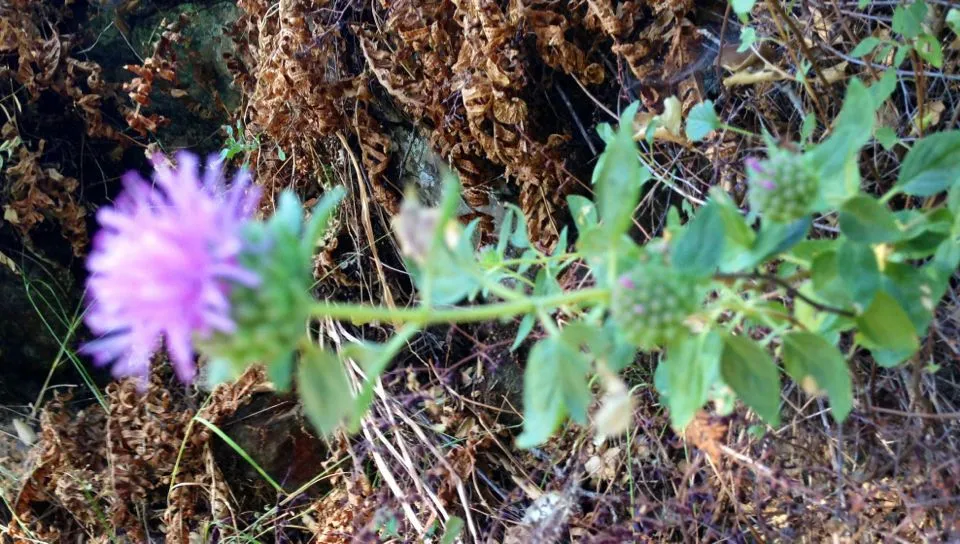
Author: Benth.
Bibliography: Bot. Voy. Sulphur: 42 (1844)
Year: 1844
Status: accepted
Rank: species
Genus: Monardella
Vegetable: False
Observations: Unknown
Coyote-mint, scientifically known as Monardella villosa, is an enchanting member of the Lamiaceae family, a group noted for its aromatic members and flowering prowess. First documented in the mid-19th century, this plant was described in detail in the botanical voyage of the HMS Sulphur, an expedition recorded in 1844 by the botanist George Bentham (Benth.). Despite the early formal documentation, there remain gaps in the observations available for this particular species, leaving much to be explored for modern botanists and plant enthusiasts.
Characterized by its aromatic qualities, Coyote-mint boasts a delightful fragrance which is typical of many in the mint family. This plant is particularly noted for its attractive blooms, which not only add visual appeal to gardens and wild landscapes but also serve as an important nectar source for pollinators such as bees and butterflies. The leaves of Monardella villosa are often green and velvety, embodying the common descriptive term “villosa,” meaning “hairy” or “shaggy.”
Coyote-mint is native to western North America, thriving in various habitats from coastal regions to inland areas. Its adaptability to different environmental conditions, coupled with its drought-tolerant nature, makes it a resilient choice for xeriscaping and sustainable landscaping projects.
In addition to its ornamental value, Monardella villosa has historically been utilized for various traditional uses by indigenous peoples of the region. The plant’s aromatic leaves were often brewed into teas or used in culinary practices, though specific usages are varied and diverse, reflecting the rich cultural heritage connected to this species.
Given the unknowns still surrounding Coyote-mint, it represents a fascinating subject for continued botanical research. Its resilience, ecological value, and aromatic charm ensure that Monardella villosa remains a notable plant within the diverse tapestry of North American flora.
En: Coyote-mint, Coyote mint
Eng: coyote mint, coyote-mint
Taken Jun 3, 2013 by EOL − icosahedron (cc-by)
Taken Jul 23, 2011 by EOL − Emily Burns (cc-by)
Taken Jun 12, 2014 by EOL − Angela Pai (cc-by-nc)
Taken May 1, 2013 by EOL − Liam O’Brien (cc-by-nc)
Taken Jul 2, 2021 by Mariela Taylor (cc-by-sa)
Taken Feb 26, 2016 by EOL − Donna Pomeroy (cc-by-nc)
Taken Jul 3, 2020 by Johnny Johnny Burgess (cc-by-sa)
Taken Jun 21, 2014 by EOL − Don Loarie (cc-by)
Taken Jul 2, 2021 by Mariela Taylor (cc-by-sa)
Taken Nov 17, 2022 by Retta Mitz. (cc-by-sa)
Taken Nov 16, 2008 by EOL − Jorg and Mimi Fleige (cc-by-nc)
Taken Nov 6, 2022 by Yoann Lussier (cc-by-sa)
Taken Nov 6, 2022 by Yoann Lussier (cc-by-sa)
Taken Oct 5, 2017 by Lisa J (cc-by-sa)
Taken May 15, 2013 by EOL − Liam O’Brien (cc-by-nc)
Taken May 17, 2013 by EOL − Jennifer Rycenga (cc-by-nc)
Taken May 17, 2013 by EOL − Jennifer Rycenga (cc-by-nc)
Taken May 2, 2013 by EOL − Liam O’Brien (cc-by-nc)
Taken Feb 17, 2013 by EOL − Christian Jordan (cc-by-nc)
Growth habit>: Subshrub, Forb/herb
Family: Myrtaceae Author: (F.Muell.) K.D.Hill & L.A.S.Johnson Bibliography: Telopea 6: 402 (1995) Year: 1995 Status:…
Family: Rubiaceae Author: Pierre ex A.Froehner Bibliography: Notizbl. Bot. Gart. Berlin-Dahlem 1: 237 (1897) Year:…
Family: Sapindaceae Author: Koidz. Bibliography: J. Coll. Sci. Imp. Univ. Tokyo 32(1): 38 (1911) Year:…
Family: Asteraceae Author: A.Gray Bibliography: Pacif. Railr. Rep.: 107 (1857) Year: 1857 Status: accepted Rank:…
Family: Fabaceae Author: Medik. Bibliography: Vorles. Churpfälz. Phys.-Ökon. Ges. 2: 398 (1787) Year: 1787 Status:…
Family: Aspleniaceae Author: (Cav.) Alston Bibliography: Bull. Misc. Inform. Kew 1932: 309 (1932) Year: 1932…